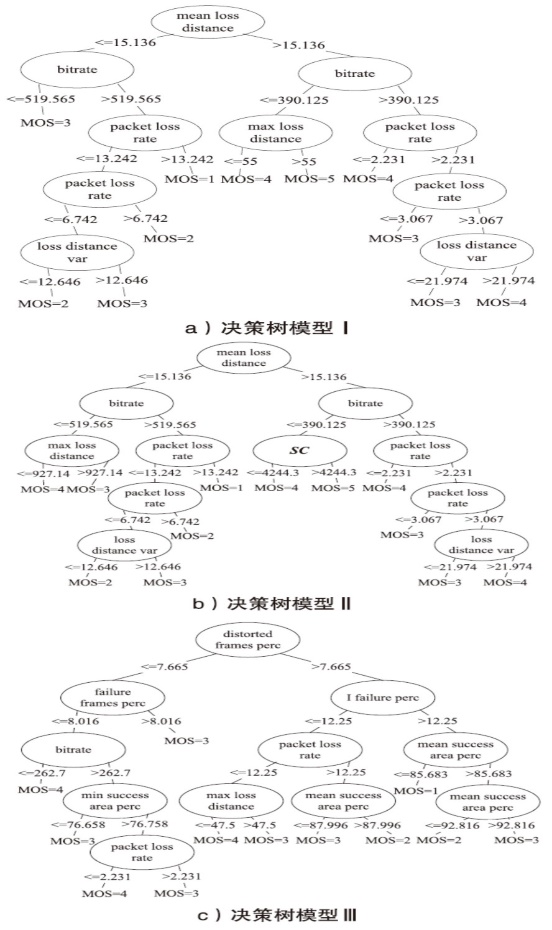信息网络安全 ›› 2015, Vol. 15 ›› Issue (3): 74-78.doi: 10.3969/j.issn.1671-1122.2015.03.015
基于决策树的流媒体视频用户体验质量评测模型研究
- 北京邮电大学信息与通信工程学院,北京 100876
Research on Model of QoE Assessment for Streaming Videos Based on Decision Tree
- School of Information and Communication Engineering, Beijing University of Posts and Telecommunications, Beijing 100876, China
摘要:
文章提出了一种基于决策树的无参考视频用户体验质量评测模型。该模型通过从网络物理层包级别和应用层视频帧级别提取一系列描绘视频特性及网络丢包和时延损伤的特征参数,采用决策树统计学习方法对流媒体服务的用户体验质量进行评测。其中,所有特征参数仅从网络视频数据包的包头部分提取解析,不涉及视频流的解码,从而大大降低了模型的计算复杂度,使评测模型具有独立于视频编码方式的优点。决策树统计学习方法具有分类速度快、可读性高等特点,可以保证实时得到用户体验质量评测结果,同时也可以给出特征参数的相对重要性,为未来的研究工作提供理论依据。实验结果显示,与其他仅考虑单一或部分特征参数的模型相比,同时考虑视频特性及网络丢包和时延损伤的评测模型在预测结果的准确性和一致性方面均有较好的表现。该模型可用于流媒体服务质量实时监控系统。
中图分类号:






